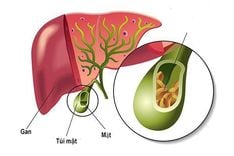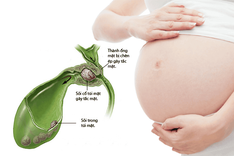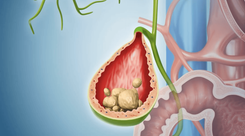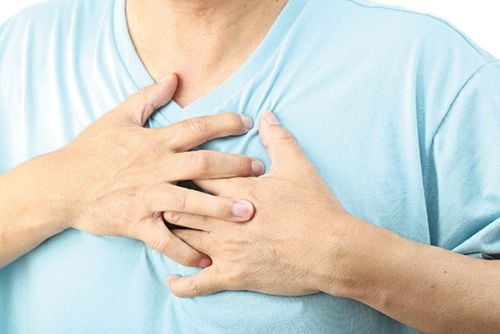One of the early symptoms of abdominal aortic aneurysm (AAA) is the sensation of a pulsation in the abdomen resembling a heartbeat. Patients often overlook this symptom until they experience severe abdominal and back pain or symptoms of shock, such as dizziness, low blood pressure, nausea, and difficulty breathing.
1. What is an Abdominal Aortic Aneurysm (AAA)?
The aorta, the largest artery in the body, is a major blood vessel that carries oxygen-rich blood from the heart. It begins just after the aortic valve in the heart's left side and extends through the chest and abdomen. The portion of the aorta located deep in the abdomen, in front of the spine, is referred to as the abdominal aorta.
Over time, the walls of the artery may weaken and dilate. The pressure of the blood pumping through the aorta can cause the weakened area to bulge outward like a balloon, a condition known as an aneurysm and when it occurs in the abdominal aorta, it is referred to as an abdominal aortic aneurysm (AAA).
The majority of AAAs are caused by atherosclerosis, a chronic degenerative condition of the arterial wall where fat, cholesterol, and other substances accumulate, forming soft or hard plaques.
AAA develops slowly over several years and rarely causes noticeable symptoms. In some cases, especially in thin individuals, a pulsating sensation in the abdomen may be felt. The larger the aneurysm grows, the higher the risk of rupture.
Key Risk Factors for AAA Include:
Men over the age of 60
Family history of AAA
Smoking
Chronic high blood pressure
Mycotic (infectious) infections
Abdominal aortic aneurysms can form in anyone, but they are most common in men over 60 who have one or more of the above risk factors. The larger the aneurysm, the greater the risk of rupture. Aneurysms grow slowly over many years and do not cause obvious symptoms. If an aneurysm grows fast, ruptures (bursts), or has a rip inside the wall of an artery (arterial dissection), the symptoms may appear suddenly, including limb weakness or even death from abrupt blood loss.
In thin individuals with minimal abdominal fat or muscle, the pulsation of the abdominal aorta may be palpable. In these cases, this can be normal. However, an ultrasound is a simple, non-invasive, and safe diagnostic tool to measure the aorta and determine whether the pulsating sensation is abnormal.
If an abdominal aortic aneurysm (AAA) expands rapidly, tears, or leaks, the following symptoms may develop suddenly:
Initially, you may feel a pulsation in your abdomen, resembling a heartbeat.
Severe and persistent abdominal or back pain, potentially radiating to the buttocks or legs;
Sweating and clamminess;
Dizziness;
Nausea and vomiting;
Rapid heartbeat;
Difficulty breathing;
Low blood pressure.
The primary risk factors for AAA include a family history of the condition, smoking, mycotic infections, and chronic high blood pressure. According to the Centers for Disease Control and Prevention (CDC), men with a history of smoking should be screened for AAA once between the ages of 65 and 75. Men with a family history of AAA should consider screening as early as age 60.
The most common cause of AAA is atherosclerosis, a condition in which fatty deposits, cholesterol, and other substances build up in the walls of arteries. This weakens the walls of the aorta, and the increased pressure of blood pumping through it can damage the inner layers of the arterial wall.
The aortic wall is composed of three layers:
Tunica Adventitia(outermost layer)
Tunica Media (muscular middle layer)
Tunica Intima (innermost layer)
These layers provide strength and elasticity to the aorta, allowing it to withstand fluctuations in blood pressure. Chronic high blood pressure can break down the intermediate layer, leading to the gradual and progressive dilation of the aorta.
Smoking is also a major cause of abdominal aortic aneurysms. Studies have shown that the prevalence of aneurysms decreases in proportion to declining smoking rates.

2. Is feeling a pulsation in the abdomen abnormal?
Initially, patients with AAA might feel a pulsation in the abdomen resembling a heartbeat. This sensation is often ignored until more severe symptoms arise, such as intense abdominal or back pain or signs of shock like dizziness and shortness of breath, indicating a late-stage condition. If you detect a pulsation in your abdomen, consult a medical professional immediately, particularly if you are male, over 60, and have risk factors such as gender, age, or genetics.
Clinical Diagnosis:
During a physical exam, doctors may detect a pulsating mass in the middle of the abdomen.
In obese individuals, physical examination is less effective.
In very thin individuals, the abdominal aorta’s pulsation beneath the skin may be a normal finding.
Blood flow within an aneurysm can cause abnormal sounds (systolic bruit) that can be heard above the aneurysm.
To confirm the presence of an aneurysm, doctors may recommend imaging tests such as:
Abdominal X-ray: Often shows calcium deposits in the aneurysm wall but cannot determine the aneurysm’s size or extent.
Ultrasound: Provides a clear image of the aneurysm’s size with about 98% accuracy. It’s non-invasive and safe. Your doctor may also use a method known as Doppler ultrasonography to monitor blood flow via the aorta. The aorta may not always be seen because the underlying intestines obscure the ultrasound image.
Abdominal CT scan: Highly accurate in determining the size, extent, and location of the aneurysm.
Angiography: Uses X-rays, CT, or MRI with contrast dye to create images of the blood vessels and identify abnormalities.

3. Treatment of abdominal aortic aneurysm
Treatment depends on the aneurysm's size, location, and the patient's age, kidney function, and overall health.
Patients with small aneurysms (<5cm) may be monitored every 6–12 months with ultrasound or CT scans. Recommendations for these patients include:
Quitting smoking;
Managing high blood pressure;
Lowering cholesterol levels.
Surgery may be recommended if the aneurysm is:
Larger than 5 cm in diameter;
Growing rapidly;
Leaking or ruptured.
Two surgical approaches are available:
Open repair surgery: A traditional method requiring an abdominal incision.
Endovascular repair (EVAR): A minimally invasive procedure using stent grafts to reinforce the aorta's weakened area.
Monitoring aneurysm size:
Aneurysm Size | Recommended Action |
| Normal (up to 1.7 cm in men, 1.5 cm in women) | No further action needed |
| < 3.0 cm | No further evaluation required |
| 3.0–4.0 cm | Annual ultrasound to monitor growth |
| 4.0–4.5 cm | Ultrasound every six months |
| > 4.5 cm | Referral to a vascular surgeon for evaluation and potential repair |
The mortality rate for a ruptured aneurysm is extremely high. Even with surgical intervention, the mortality rate is approximately 40%. Common complications include:
Abdominal aorta–inferior vena cava fistula: Symptoms include heart failure, kidney failure, leg swelling and abdominal murmur.
Abdominal aorta–duodenal fistula: Leads to vomiting and gastrointestinal bleeding.
Aneurysm rupture: Typically preceded by abdominal or back pain correlating to the location of the aneurysm; it might result in free bleeding into the peritoneal cavity or retroperitoneal space. Free rupture into the peritoneal cavity can cause cardiovascular collapse with a high mortality rate, while retroperitoneal rupture may allow for emergency intervention with symptoms such as severe abdominal or back pain, pale skin, sweating, and low blood pressure.
Since the abdominal aorta is the largest artery in the body and has significant blood flow, a weakened wall in the aneurysm can easily rupture. Moreover, the hemodynamics within the aneurysmal section generate turbulent blood flow that strikes the arterial walls, making it highly prone to rupture, especially in aneurysms with a diameter larger than 5 cm. When an aneurysm ruptures, there is a substantial risk of mortality and serious complications.
If you feel a pulsating sensation in your abdomen, it’s important to consult a trusted healthcare provider. Tests will be performed to rule out various causes.
Please dial HOTLINE for more information or register for an appointment HERE. Download MyVinmec app to make appointments faster and to manage your bookings easily.













